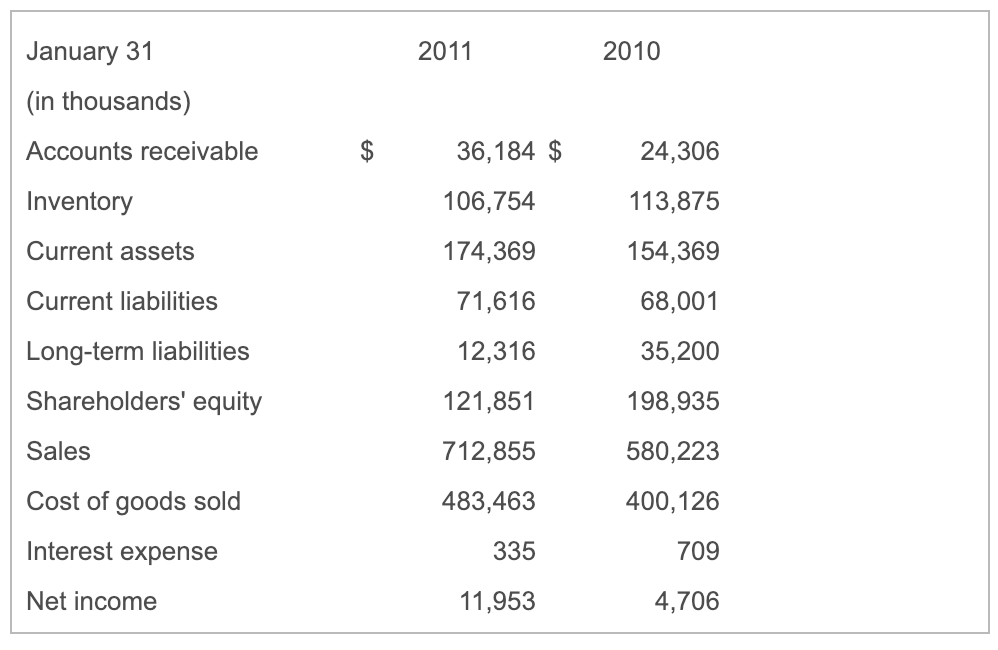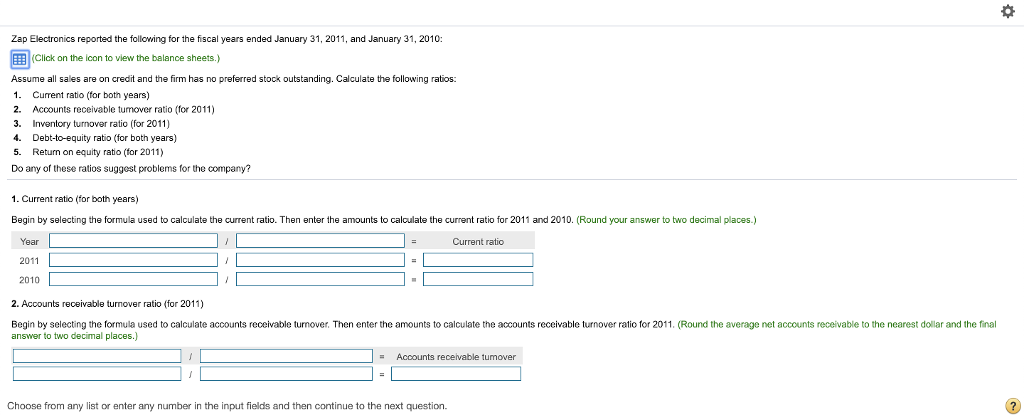Answered step by step
Verified Expert Solution
Question
1 Approved Answer
Zap Electronics reported the following for the fiscal years ended January 31, 2011, and January 31, 2010: Assume all sales are on credit and the
Zap Electronics reported the following for the fiscal years ended January 31, 2011, and January 31, 2010:
Assume all sales are on credit and the firm has no preferred stock outstanding. Calculate the following ratios:
| 1. | Current ratio (for both years) |
| 2. | Accounts receivable turnover ratio (for 2011) |
| 3. | Inventory turnover ratio (for 2011) |
| 4. | Debt-to-equity ratio (for both years) |
| 5. | Return on equity ratio (for 2011) |
Do any of these ratios suggest problems for the company?




Step by Step Solution
There are 3 Steps involved in it
Step: 1

Get Instant Access to Expert-Tailored Solutions
See step-by-step solutions with expert insights and AI powered tools for academic success
Step: 2

Step: 3

Ace Your Homework with AI
Get the answers you need in no time with our AI-driven, step-by-step assistance
Get Started


